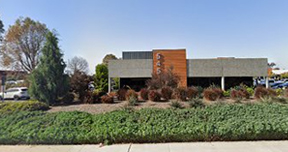Suffer Injuries from a Vehicle Fire? Call (619) 233-5020
Although the development and production of electrically-powered vehicles has been gaining momentum‚ most vehicles have internal combustion engines that still rely on a combustible power source‚ namely gasoline. Gas‚ whether it is natural gas or hydrogen gas‚ is highly flammable‚ so the quality and function of the equipment and mechanisms that control its storage and application are vitally important. Poor quality materials‚ inadequately fastened components and/or poor design can be very dangerous in the event of an auto accident. All it takes is one small gas leak to start and feed a vehicle fire‚ leading to serious burn injuries‚ and even death.
Stepping on the Gas
A motor vehicle’s fuel system is complicated and must be integrated into the vehicle in such a way that it is protected in case of a traffic accident. Since the evolution of the internal combustion engine‚ and the fall of the carburetor‚ there have been many developments to the fuel delivery system. Now‚ all cars are designed with at least a basic‚ if not a multi-port fuel injection system. The basic process that injects fuel into the cylinders is as follows:
- Step on the gas pedal‚ which is connected to the throttle valve. The throttle valve regulates the amount of air that enters the engine;
- Throttle valve opens‚ letting in more air;
- Engine control unit (ECU) increases fuel rate to optimal air-to-fuel ratio as determined by various sensors;
- Fuel pump delivers gas through the fuel line to the electronically controlled fuel injectors;
- Fuel injector sprays pressurized and atomized gas into intake valves;
- Spark plug supplies spark that ignites air-fuel mixture;
- Combustion in the cylinder pushes the piston‚ which turns the engine.
If One Thing Goes Wrong
All modern cars use at least a basic fuel injection system. It is commonplace enough now where auto manufacturers have a fairly foolproof formula for its design and installation‚ but auto manufacturers do not always take the impact of a car crash into account in its design. With a poor fuel system design‚ defective fuel line‚ poor quality materials‚ or even just abnormal placement of any fuel system components‚ a crash can cause a gas leak‚ gas tank detachment or other dangerous consequences which is usually the precursor to a vehicle fire. An internal combustion engine is inherently dangerous and must be thoroughly crash tested to ensure that the risk of damage to the fuel system‚ and subsequently a vehicle fire‚ are minimal‚ if not non-existent.
Putting the Fire Out
A consumer who purchases a car should never serve as a crash-testing dummy. A real-world accident should not reveal any manufacturing and/or design defects that were supposed to be identified in crash tests before the vehicle was placed on the market. If you have suffered injuries from a vehicle fire in California‚ the experienced San Diego car accident injury attorneys at the Jurewitz Law Group Injury & Accident Lawyers can help you pursue compensation for the damages and losses you have suffered as a result of negligent manufacturing and/or inadequate crash testing. Contact us today to learn more about your legal rights and options at (619) 233-5020 or (888) 233-5020.


